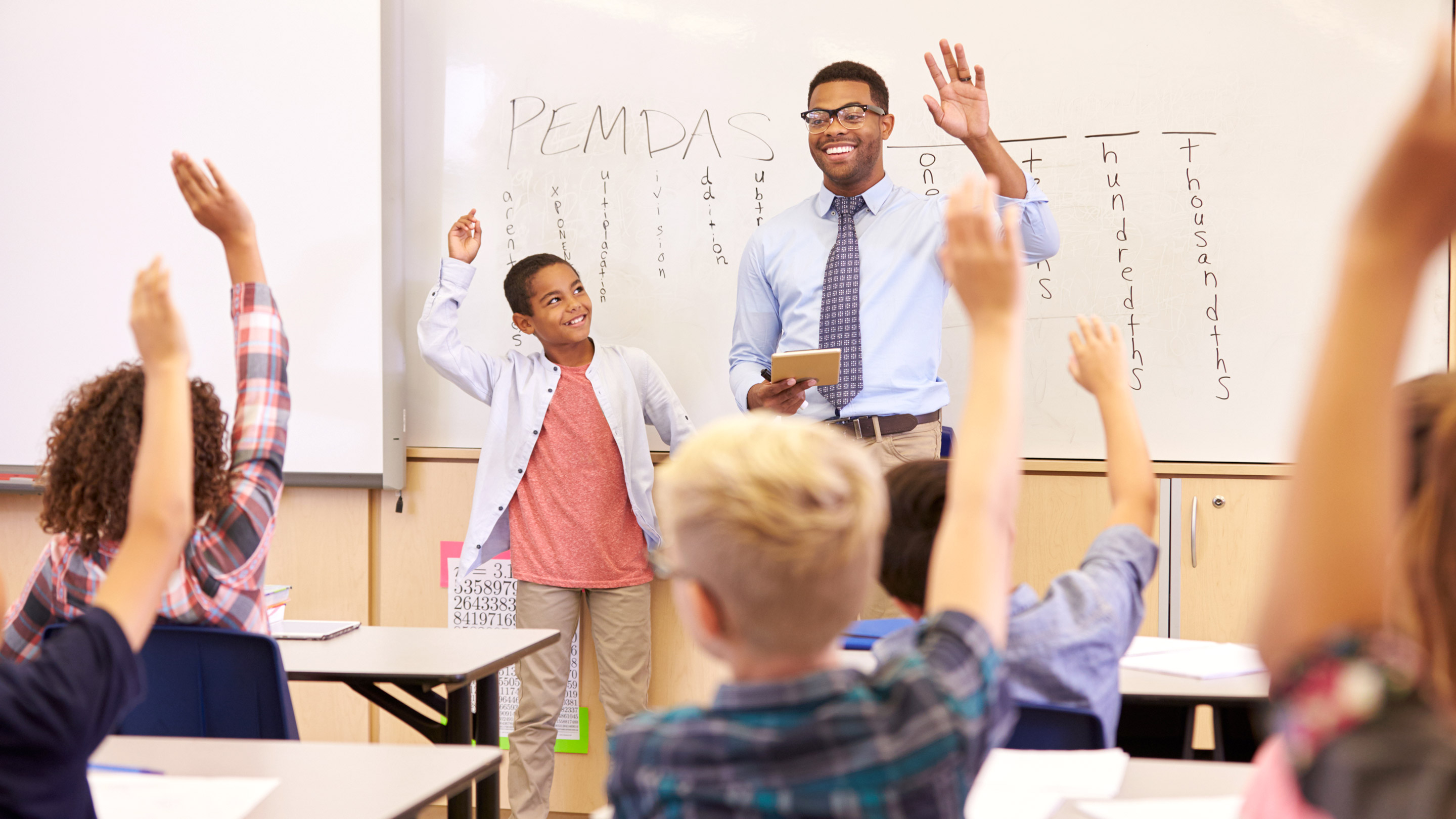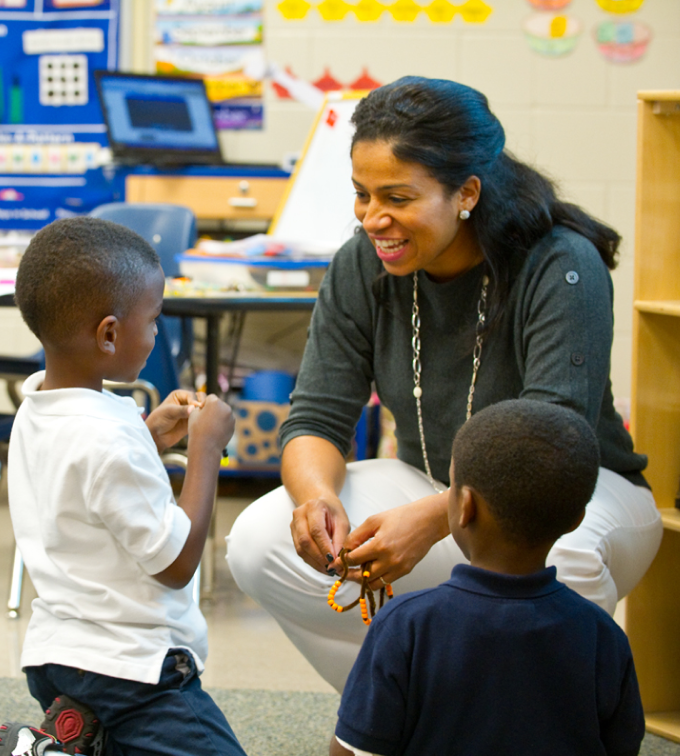Exploring the Different Teaching Techniques in Key Science Education Today
The landscape of primary science education and learning is developing, with numerous training approaches acquiring prestige in contemporary classrooms. Inquiry-based discovering, hands-on experiments, and the assimilation of technology are redefining exactly how teachers engage young minds. In addition, collective methods and separated guideline are being used to satisfy the diverse needs of students, boosting both interaction and understanding. As we analyze these techniques, inquiries occur about their performance and the effects for future educational techniques. What might these shifts in strategy mean for the future generation of learners?
Inquiry-Based Discovering
Inquiry-Based Knowing (IBL) is an instructional method that encourages trainees to discover clinical ideas with doubting, examination, and hands-on testing. This method highlights the role of pupils as active individuals in their knowing, promoting important thinking and analytical skills. By engaging with real-world inquiries, trainees become motivated and curious, which boosts their understanding of clinical principles.
In IBL, teachers function as facilitators, guiding trainees as they browse their inquiries rather than providing info directly. This student-centered approach permits distinction, suiting numerous learning paces and designs. Students develop skills in formulating hypotheses, making experiments, and assessing information, which are critical for clinical proficiency.
In addition, IBL promotes cooperation amongst students, motivating them to share concepts and searchings for. This collective query advertises social skills and a sense of area within the classroom. In addition, the process of questions motivates durability, as pupils discover to embrace failure as a stepping rock toward understanding.
Hands-On Experiments
Hands-on experiments are an essential element of reliable science education and learning, enhancing the concepts of inquiry-based learning. These experiments allow pupils to involve directly with clinical ideas, promoting a deeper understanding via experiential knowing. By manipulating products and observing outcomes, young learners can grasp abstract theories in substantial methods.
Such activities advertise essential thinking and analytic abilities, as trainees assume outcomes, conduct experiments, and analyze outcomes. This process urges them to ask concerns, improve their understanding, and establish a clinical attitude. Hands-on experiments can be customized to varied understanding styles, guaranteeing that all pupils have the chance to engage meaningfully with the content.
Furthermore, hands-on experiments commonly encourage cooperation among peers, promoting team effort and interaction skills. Functioning in teams enables students to share concepts, go over findings, and gain from each other, which enhances their general instructional experience.
Including hands-on experiments into the key scientific research educational program not just improves the discovering setting however likewise cultivates a lifelong rate of interest in science. By actively getting involved in their education and learning, pupils are most likely to develop an interest for scientific questions that expands beyond the classroom.

Technology Assimilation
Integrating technology into main scientific research education has ended up being progressively crucial in promoting student involvement and improving discovering end results. The use of digital tools, such as interactive simulations, online laboratories, and instructional software program, supplies pupils with chances to check out scientific concepts in innovative methods. These resources help with a much deeper understanding of intricate subjects by allowing learners to imagine and control variables that would certainly be impractical in a typical classroom setup.
Moreover, technology combination motivates individualized discovering experiences. Pupils can advance at their own speed, revisiting challenging principles via multimedia resources, which accommodate various discovering styles. This adaptability not only sustains individual growth however also grows a sense of autonomy in students.
Additionally, technology acts as a bridge to real-world scientific research, connecting trainees with current research study and expert payments. Accessibility to on-line data sources and clinical journals expands students' perspectives on scientific questions and promotes important believing skills.
Collaborative Understanding
Joint knowing plays an essential function in primary scientific research education by cultivating team effort and communication skills amongst trainees. This method urges students to work together, share expertise, and participate my blog in problem-solving, which enhances their understanding of clinical ideas. By taking part in group activities, pupils find out to express their concepts, listen to diverse perspectives, and work out solutions, every one of which are vital abilities in both real-world and scholastic contexts.

Study suggests that collaborative knowing can cause enhanced inspiration and involvement in scientific research subjects, as trainees locate enjoyment in shared experiences (primary science tuition Singapore). Additionally, this method prepares trainees for future joint undertakings, equipping them with the skills essential for reliable teamwork in college and expert environments. Eventually, welcoming joint knowing in primary scientific research education can dramatically enhance the discovering experience and advertise a much deeper understanding of scientific inquiry
Set Apart Direction

Separated instruction can manifest in numerous means, such as varying the web content, processes, or items of understanding. As an example, instructors might utilize tiered jobs that offer differing levels of complexity, enabling trainees to operate at their particular readiness degrees. Additionally, adaptable organizing techniques can help with collaboration amongst pupils with different capacities, cultivating peer discovering.
Analysis plays a crucial duty in this strategy, as it informs direction and helps instructors recognize each pupil's special demands. Formative evaluations, such as observations and tests, can guide teachers in adjusting their methods to boost discovering results. primary science tuition Singapore. Ultimately, by implementing separated instruction in primary science education, educators can grow a more equitable and efficient learning atmosphere, encouraging all students to reach their complete capacity in recognizing scientific phenomena
Final Thought
In summary, the diverse training strategies in main science education, consisting of inquiry-based discovering, hands-on experiments, modern technology assimilation, collective discovering, and differentiated guideline, jointly add to a much more effective discovering atmosphere. These methods promote crucial reasoning, analytic abilities, and a deeper understanding of clinical concepts. By applying these methods, teachers can develop appealing click to read and supportive classrooms that resolve the varied demands of students, inevitably cultivating a lifelong passion in science and boosting scholastic accomplishment.
Inquiry-Based Understanding (IBL) is a pedagogical technique that urges pupils to discover clinical concepts through wondering about, investigation, and hands-on trial and error.Joint knowing plays an essential role in main scientific research education and learning by fostering team effort and interaction abilities among trainees.Study indicates that collective knowing can lead to enhanced inspiration and interaction in scientific research topics, as trainees discover satisfaction in common experiences.In fostering a comprehensive learning setting, differentiated instruction arises as a crucial strategy to suit the diverse requirements and capacities of pupils in primary science education and learning. Ultimately, by implementing differentiated guideline in primary scientific research education, instructors can cultivate a more efficient and equitable learning atmosphere, equipping all pupils to reach their complete possibility in understanding clinical sensations.
Comments on “Enroll in Primary Science Tuition Singapore for a Strong Science Foundation”